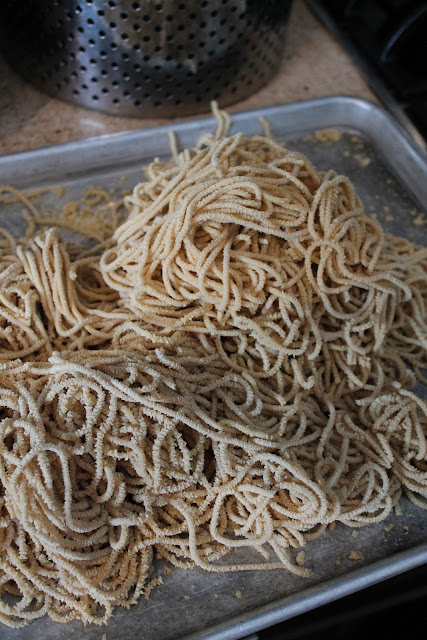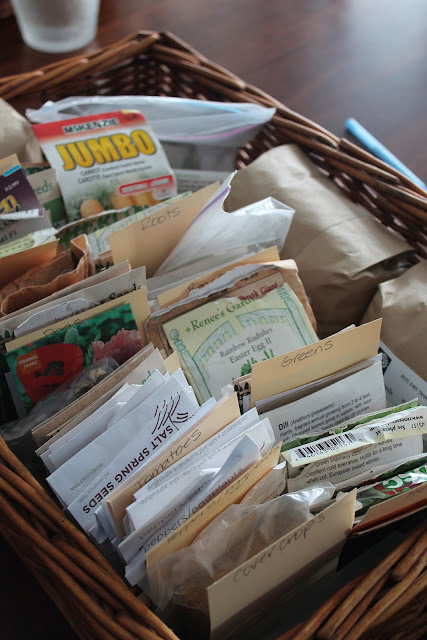Permaculture fosters community.
Generally speaking, our present western society doesn't. I was raised (like the vast majority of my generation) to go it
alone.
Alone not in the literal sense ~
alone, as in "build your empire, nose to the grindstone, make it happen on your own steam". Work hard to build your own wealth and your own possessions (and your debt). The rewards will follow! The last 22 years of marriage (and our entire adult life for that matter) has been rather busy
independently doing those very things.... growing everything
but a sense a sense of community.
A sense of community. Do we even know what that
is anymore?
To belong. To matter. To care. To notice. To share. To help. To nurture. To teach. To learn. To nourish. To give. To receive. To laugh and cry and connect through all the stages and phases of life.
Our
sense of community is dying in many neighbourhoods, towns and cities across this country and indeed, perhaps this continent. I've asked a great many people about it and the answers aren't encouraging me. I'm not
alone in my thinking ~ that we are in fact,
alone and isolated on so many levels. We socialize via screens and fingertips, we support by "tweeting" and "liking". Are we destined to build community through friend requests? Is there hope for old fashioned face to face community building?
Over the weekend (in my permaculture design course), I was forced out of that familiar "independent and alone" place. Thrust (repeatedly) into different groups (all day!) to work on brief but intense collaborative assignments for short periods of time. Independent thinking and personal agendas did NOT help that process ONE little bit (in fact, I think it's safe to say that it HINDERED the process, restricting the outcome). My instinct was to "do it myself" so that I could do a "better job". The group process was painful and stressful for me. Little did I know then, that I NEEDED to learn WHY.
The most pivotal (and powerful) exercise came later as we created a connected web of classmates. I cringed a little (inside) when we stood in a circle and each shared a skill that we posses by verbally offering it up to the group. Awkward. Super awkward! No advance notice, no time to think. Fast exercise. Time limit.
Just what can I DO that anyone would care about let alone want to know about?! I offered to teach people how to grind wheat and make bread from scratch. Someone (thankfully) was eager to learn from me so I tossed the ball of wool to her across the circle. Whew! She offered up her knowledge on the subject of trees and immediately, her offer was taken up by a classmate who needed her assistance. The yarn continued it's random, criss cross journey while we all thought quickly on our feet, each of us
forced to jettison inhibition and any sense of valuation or comparison. It was down to basics.
What can I do and what do I need?
By the time we reached the end of the length of wool, we were all deeply entangled and connected to one another through a very broad spectrum of skills, knowledge and experience. What a powerful exercise in community building! It felt GOOD to have pushed through that uncomfortable beginning which resulted in the rewarding knowledge that I was in the presence of of group of people with completely different skills and talents from my own (from carpentry and welding to art and music and everything in between!). I felt alert, connected and energized ~ like I was an integral part of the group with the unique skills that I possess. We felt like a
community!
Sadly, what came next illustrated exactly what is happening in society
today.
The instructor let go of his connection points in the web of yarn. The wool slackened and drooped limply. So did our faces. Our connections weakened (but not our resolve!). We all pulled tighter to keep our remaining connections intact and strong, ready to face the rest of the exercise, but... sadly, another person let go "removing" another set of skills from the collective. The wool once again slackened ~ this time, touching the floor in some places. It was pretty obvious that it was futile to try and repair the damage ~ we were no longer a community and nobody was interested in even
trying to repair it. The damage was too great. I felt exposed and raw (did anyone else?).
In closing, we were challenged by our instructor to
build community in our lives by harnessing the collective power, wisdom and experience of
all of our community members. Past permaculture design course grads have offered up the same wisdom with this phrase:
"The class is as much about the people as it is the material".
I read that a few months ago but I dismissed it... Silly, stubborn me. It seemed too "inclusive" and dependent for me as one who prefers to (you guessed it) "
go it alone". Such an unravelling this course has been for me! That community building exercise has sat uneasily on my mind for 3 full days. Coupled with another harsh realization over the weekend (completely unrelated to my course but directly connected to this theme), I've realized that what
I need is
community. Here I sit in my home (alone just at this minute), tapping on a keyboard, but what I
need to do is get out into my community to connect with people, share my skills and learn from others.
Imagine the power of building community.
I'm challenging you to do it!






















